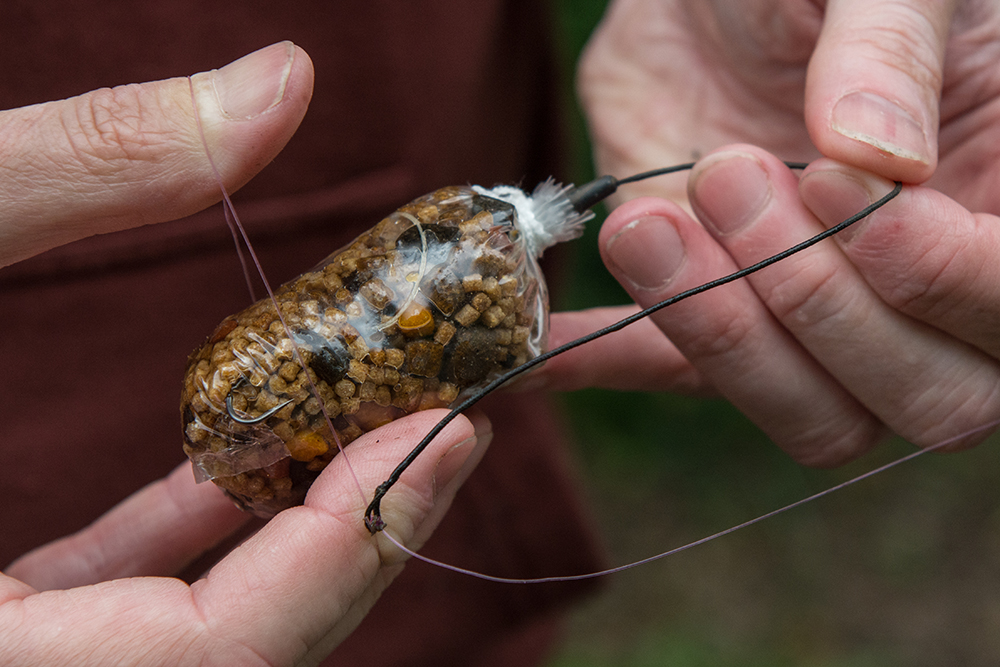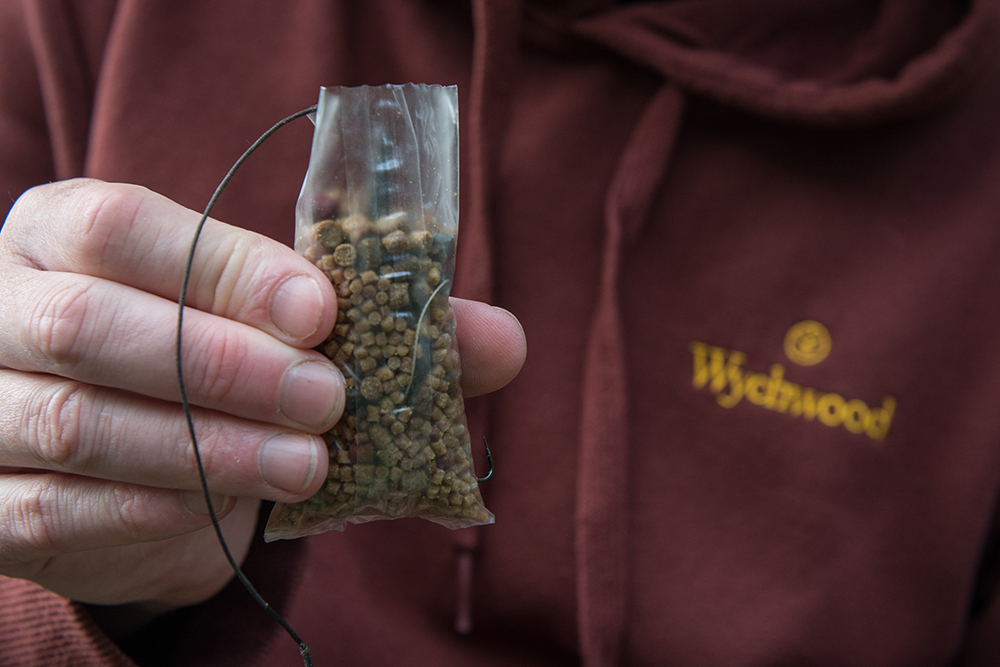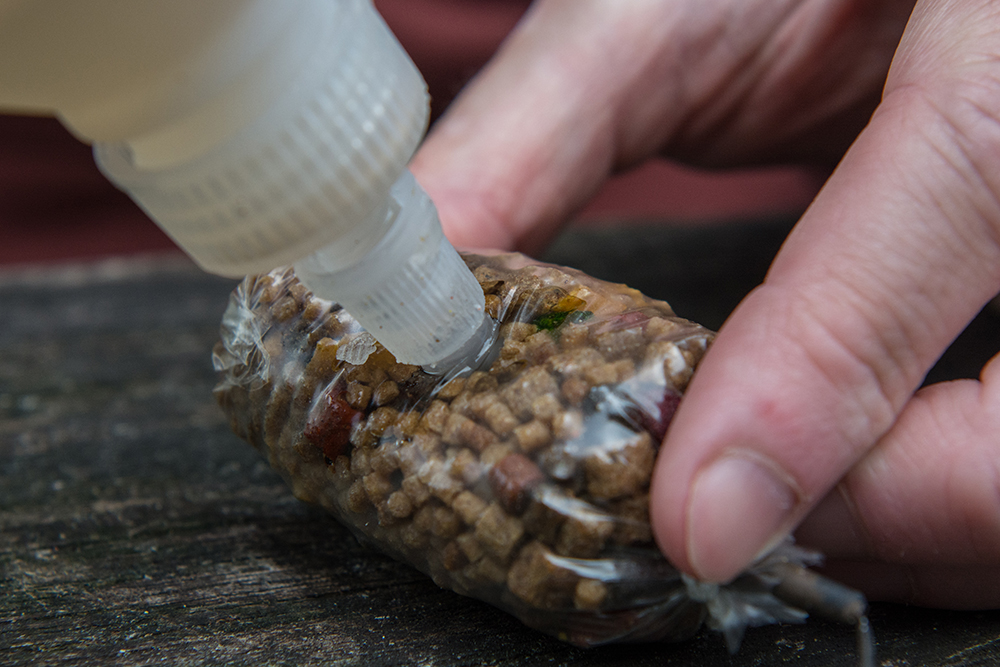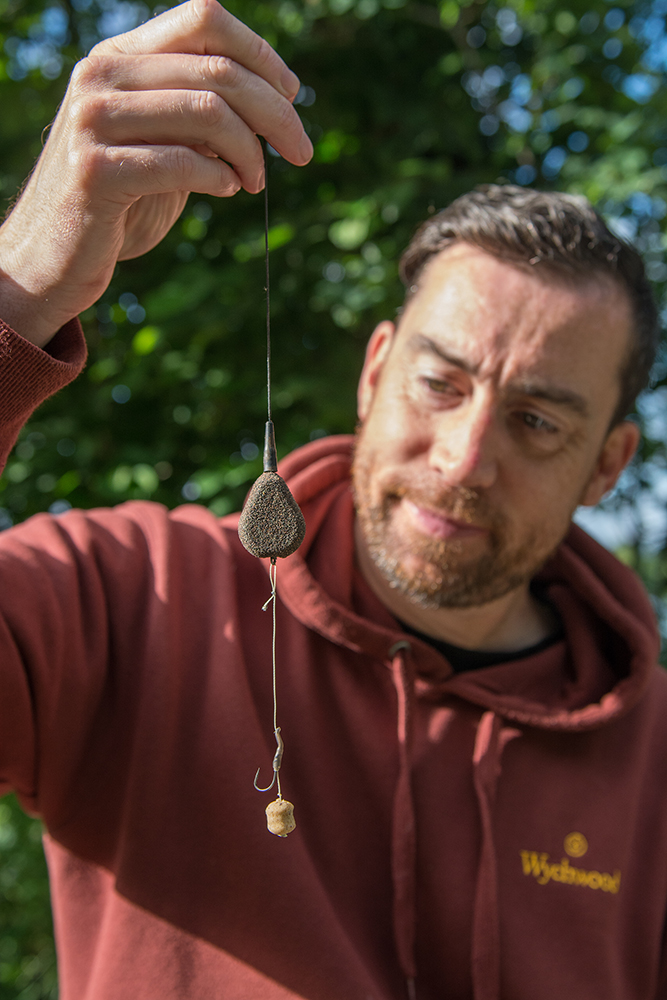It may not be everyone’s cup of tea, and it can be dificult to get everything set up with a solid bag, but this technique is a tactic well worth adding to your armoury. Not only is it a great presentation offering a mouthful of food to an inquisitive carp, but it also ensures your rig does not tangle, and can even be cast at great range due to the nature of the aerodynamics of a tightly-packed solid bag.
It can be beneficial to have a dedicated bucket with everything set up ready to go and to hand. It’s easy to pick up for a short session and leave it in the car knowing you need nothing else in terms of bait. When you look at the pros of using a solid bag you can see why some anglers use nothing else. It's possibly the perfect one cast, one mouthful bite combination you can get.
Solid bag fishing is also a great tactic for when you have limited fishing hours and want to travel light, as you can make up a few solid bags and carry with you. Loop a bag on and your fishing, land a fish, loop a new bag on and your fishing again. Its that simple.
The only real downside is living in a country that seems to be variations of wet, but a little bucket of pellets will keep them dry and out of the British weather. My top tips for using the solid PVA bag method are below and I will explain why each one is key.

1. Loop to loop
Solid bags aren’t the quickest things to make and to get them perfect takes time. A must is to ensure rigs/leads are dry before trying to tie a new bag. So simply place it back in the bucket under some pellet for 10 minutes. I always tie 6 to 10 bags up before each session, but splice a small loop in the end of the leader material. I then simply tie a loop in my mainline just large enough to pass over the bag. Pass your mainline through the loop on the leader and over the bag and in 30 seconds you’re fishing. This then becomes a very quick method of fishing, as you can make new solid bags up whilst waiting for bites, and quickly change and recast when necessary.
Note: Ensure you tie all your leaders the same length to ensure pinpoint accuracy.
2. Hitting the spot
Say you want to fish to a feature, maybe a tree line on the far margin. With line stretch and the extra weight of the bag your cast could be the difference between a tree line money shot or in the tree line itself tangled. Simply mock up some leader material with a heavier lead, I use 2oz in the bag so add a 4oz for this, which will emulate the full weigh of the bag when casting. Tie this the same length as your solid bag leaders, this way when you clip up to the same wraps you’re straight back on your spot. If it’s raining, use the mock up rig to get the desired wraps and loop the solid bag on in your dry bivvy just before you cast.

3. Pellet size
Using a mix of pellet of straight 2mm pellet will ensure your bag is tight with less air pockets as the smaller pellets fill the gaps more substantially, meaning it’s easier to cast longer distances and be more accurate. This will also ensure the bags sinks quicker to the lake bed and reduce the risk of it melting on the way down. Pellet gives off lots of smell, with very little food drawing the fish into the area. Leaving only the larger particles and your hook bait for hungry carp. If you can’t use pellet due to bream, crumb up some boilie, this makes a perfect substitute.

4. Liquids and glugs
For added pulling power you can add liquids. For instance, using hemp oil will flatten the surface when fish are feeding on your bait. This can be a great indication if your trying to work out if any fish are in the area. Adding a couple of different liquids, you can target the upper layers with lighter liquids and heavier to remain around the hook bait. The options are endless; giving you more than a one-dimensional bottom bait or pop up.

5. Short Hooklinks
Remember the fish are coming in for one mouthful, so an 8” hook link means the fish has to move some distance with your bait in its mouth before the hook takes hold. Somewhere between 3 and 4” is a good starting point, but can be adjusted depending on conditions.

